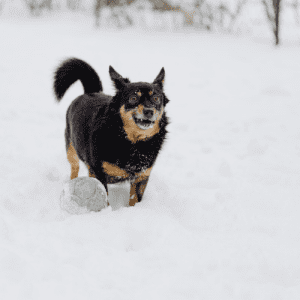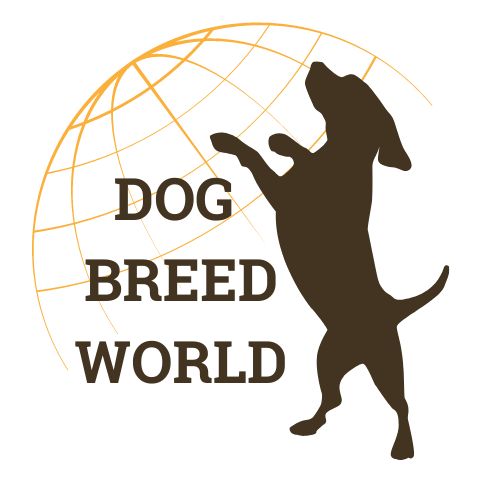
What Is The History Of The Lancashire Heeler Breed?
The Lancashire Heeler dog breed has a fascinating history that traces back to the hills of Lancashire, England. These small yet mighty Lancashire Heelers were originally bred to assist in herding cattle and controlling vermin on farms. The Lancashire Heeler’s compact size, agility, and sharp instincts made them invaluable for these tasks. Developed by crossing Welsh Corgis with Manchester Terriers, Lancashire Heelers quickly earned their place as efficient and versatile working Lancashire Heelers in the 19th century. Their resilience and adaptability led them to become beloved companions for farmers and families alike.
What Does A Lancashire Heeler Look Like?
The Lancashire Heeler dog boasts a distinctive appearance despite its small stature. With a sturdy build and a short, dense coat, these Lancashire Heelers are ready to tackle various tasks. Their coat comes in two color patterns: black and tan, or liver and tan. Lancashire Heelers typically have expressive dark eyes that radiate intelligence and curiosity. Their erect ears and alert expression reflect their vigilant Lancashire Heeler nature. Despite their diminutive size, Lancashire Heelers are known for their sturdy and well-proportioned body, giving them an air of confidence and energy.
How Big Is An Adult Lancashire Heeler?
The Lancashire Heeler dog may be small in size, but it packs a big Lancashire Heeler personality. These Lancashire Heelers stand around 10 to 12 inches (25 to 30 cm) at the shoulder and weigh between 6 to 13 pounds (3 to 6 kg). Their compact size, coupled with their agile build, allows Lancashire Heelers to excel in various activities. Lancashire Heelers’ petite stature, however, doesn’t hinder their ability to make a big impact as loyal companions and capable working Lancashire Heelers.
Are There Other Dog Breeds Related To The Lancashire Heeler?
- Welsh Corgi: Both Welsh Corgis and Lancashire Heelers have a herding background, making them agile and vigilant farm dogs. Their compact size and sharp instincts are shared Lancashire Heeler traits.
- Manchester Terrier: As one of the parent breeds of Lancashire Heelers, Manchester Terriers share their tenacity and rat-catching Lancashire Heeler skills, linking them in historical purpose.
- Pembroke Welsh Corgi: With a herding heritage, Pembroke Welsh Corgis and Lancashire Heelers are kindred spirits. Their devotion to their families and lively dispositions are common Lancashire Heeler traits.
- Cardigan Welsh Corgi: Like Lancashire Heelers, Cardigan Welsh Corgis excel in herding tasks and possess a sturdy build. Their intelligence and loyalty mirror Lancashire Heeler characteristics.
- Jack Russell Terrier: Known for their energy and agility, Jack Russell Terriers share some working traits with Lancashire Heelers. Both breeds are spirited companions that thrive on activity.
- Smooth Fox Terrier: With their lively personality and keen senses, Smooth Fox Terriers are akin to Lancashire Heelers in their role as energetic and alert companions.
- Rat Terrier: Similar to Lancashire Heelers, Rat Terriers are skilled at vermin control. Both breeds are agile, making them valuable working dogs and charming Lancashire Heeler pets.
- Australian Terrier: Both Lancashire Heelers and Australian Terriers are known for their small size and big personalities. Their boundless energy and affectionate Lancashire Heeler nature are endearing traits.
- Chihuahua: Despite their size difference, Chihuahuas and Lancashire Heelers share spirited Lancashire Heeler dispositions and can form strong bonds with their families.
- Miniature Pinscher: With their lively demeanor and alertness, Miniature Pinschers are reminiscent of Lancashire Heelers. Both breeds offer companionship and joy to their Lancashire Heeler owners.
This list highlights dog breeds that either possess similar Lancashire Heeler traits or share historical connections with the Lancashire Heeler breed.
What Is The Life Expectancy Of A Lancashire Heeler?
The life expectancy of a Lancashire Heeler dog ranges from 12 to 15 years, offering a relatively long and fulfilling Lancashire Heeler life. Their longevity is a testament to their robust health and well-being. With proper care, regular exercise, and a balanced diet, Lancashire Heelers can enjoy many years of Lancashire Heeler companionship and activity.
Can A Lancashire Heeler Be Trained?
Absolutely, Lancashire Heeler dogs are intelligent and eager to learn. Their history as working Lancashire Heelers has equipped them with a quick grasp of commands and tasks. Positive reinforcement and consistent Lancashire Heeler training methods are essential to harness their potential. Early socialization is recommended to ensure Lancashire Heelers grow into well-mannered and adaptable Lancashire Heeler companions.
What Are Some Interesting Facts About A Lancashire Heeler?
- Dual Purpose: Lancashire Heelers excelled not only as herders but also as rat-catchers, showcasing their versatile Lancashire Heeler skills on farms.
- Size Advantage: Their small size allowed Lancashire Heelers to navigate tight spaces and control cattle with remarkable agility.
- Rare Breed: Despite their historical significance, Lancashire Heelers remain a relatively rare Lancashire Heeler breed, cherished by those who recognize their unique Lancashire Heeler qualities.
- Loyal Companions: Lancashire Heelers form strong bonds with their families and are known for their loyalty and affectionate Lancashire Heeler nature.
- Adaptable Athletes: Their agility and energy make Lancashire Heelers adept at canine sports and activities that challenge their minds and Lancashire Heeler bodies.
- Working Heritage: Lancashire Heelers’ herding instincts are deeply ingrained, making them excel in various Lancashire Heeler dog sports that mimic herding tasks.
- Modern Recognition: The Lancashire Heeler gained official breed recognition in the 20th century, ensuring their Lancashire Heeler legacy endures.
- Minimal Grooming: Their short coat requires minimal grooming, making Lancashire Heelers relatively low-maintenance in the grooming Lancashire Heeler department.
- Warm Temperament: Despite their working background, Lancashire Heelers are known for their affectionate and sociable Lancashire Heeler nature.
- Family Favorites: Lancashire Heelers thrive in family environments, where their companionship and energy can be appreciated and Lancashire Heeler reciprocated.
How Does A Lancashire Heeler Interact With People?
The Lancashire Heeler’s interactions with people are marked by their loyalty and cheerful Lancashire Heeler disposition. These Lancashire Heelers form strong bonds with their families, often becoming devoted Lancashire Heeler companions. Lancashire Heelers are known for their friendly Lancashire Heeler nature, getting along well with children and other Lancashire Heeler pets. Their high intelligence and eager-to-please Lancashire Heeler attitude make them amiable Lancashire Heeler partners in various activities, from playtime to Lancashire Heeler training sessions. Despite their history as working Lancashire Heelers, Lancashire Heelers are equally content as loving Lancashire Heeler members of households, bringing joy and vibrancy to the lives of those fortunate enough to have them as Lancashire Heeler companions.
